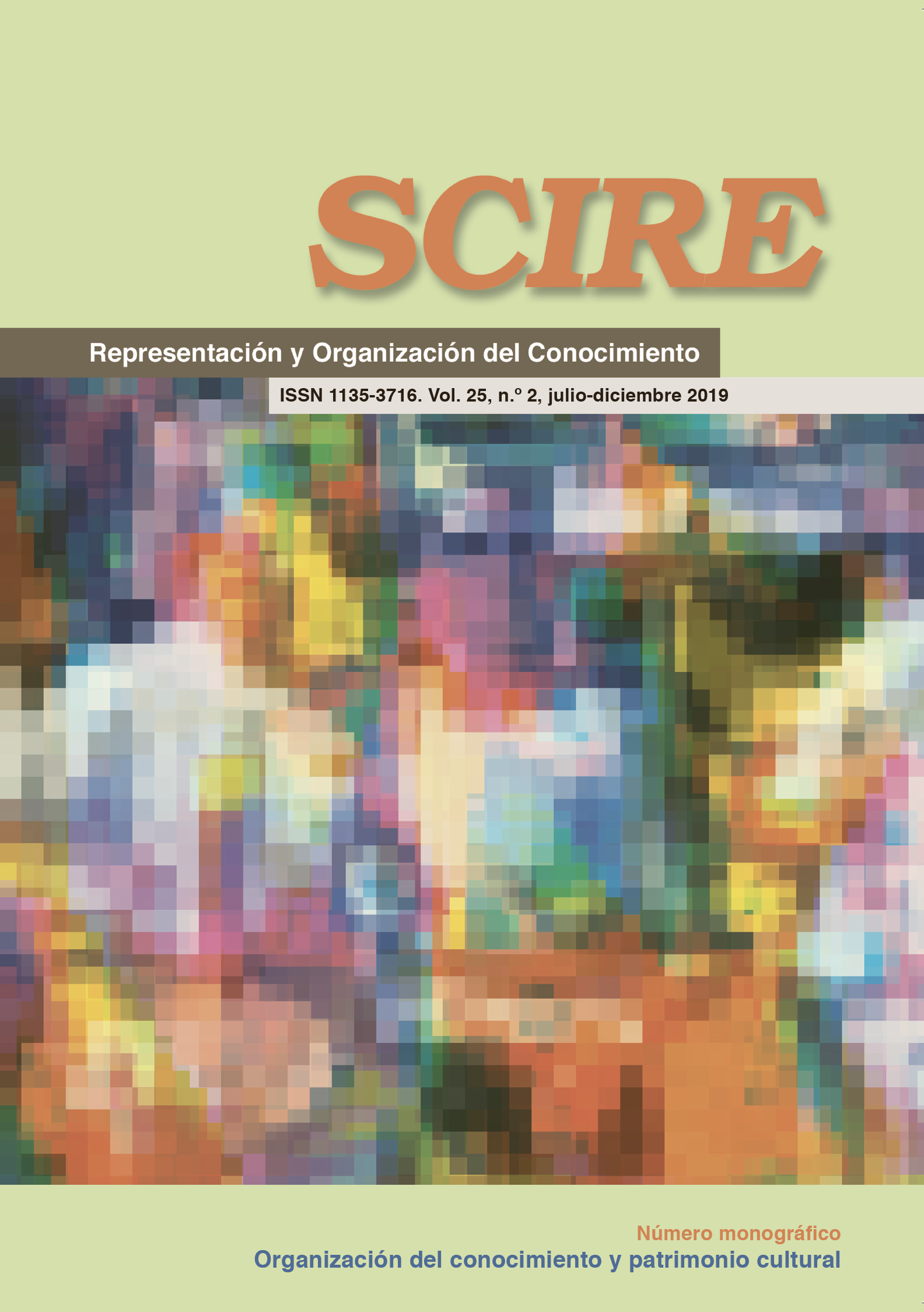A Classification of types of heritage objects to integrate digital collections of archives, libraries and muse-ums
DOI:
https://doi.org/10.54886/scire.v25i2.4618Abstract
Since the raise of the Web, the Memory and Culture institutions - archives, libraries and museums - have been digitizing their collections and making them available on the Web through computerized tools. When it comes to portals that integrate heterogeneous collections, such as those found in archives, libraries and museums, the traditional search box for keywords consists of true "black boxes", since users have no idea of the contents of the system. In this context, heterogeneous portals must provide several other navigation and exploitation mechanisms for the available content, which can guide users in their search for information. Among these mechanisms are several indexes, filters or navigational taxonomies, which allow exploitation of the database according to different facets. This work aims to propose a comprehensive classification of types of objects existing in collections of Memory and Culture institutions, which may enable navigation, discovery, integration and interoperability between such collections.
Downloads
Downloads
Published
How to Cite
Issue
Section
License
Copyright (c) 2019 Authors retain their copyright, but transfer the exploitation rights (reproduction, distribution, public communication and transformation) to the journal in a non-exclusive way and guarantee the right to the first publication of their work to the journal, which will be simultaneously subjected to the license CC BY-NC-ND. Authors take whole personal responsibility on fulfilling all the appropiate ethical codes and laws, and obtaining all the necessary copyright permissions regarding their articles. Institutional and self- archiving is allowed and encouraged.

This work is licensed under a Creative Commons Attribution-NonCommercial-NoDerivatives 4.0 International License.
© 1996- . Authors retain their copyright, but transfer the exploitation rights (reproduction, distribution, public communication and transformation) to the journal in a non-exclusive way and guarantee the right to the first publication of their work to the journal, which will be simultaneously subjected to the license CC BY-NC-ND. Authors take whole personal responsibility on fulfilling all the appropiate ethical codes and laws, and obtaining all the necessary copyright permissions regarding their articles. Institutional and self- archiving is allowed and encouraged.




